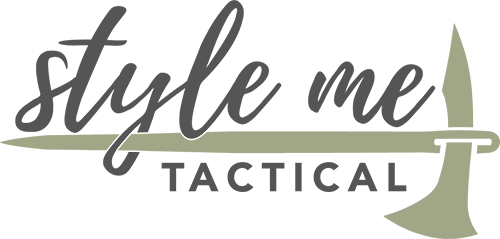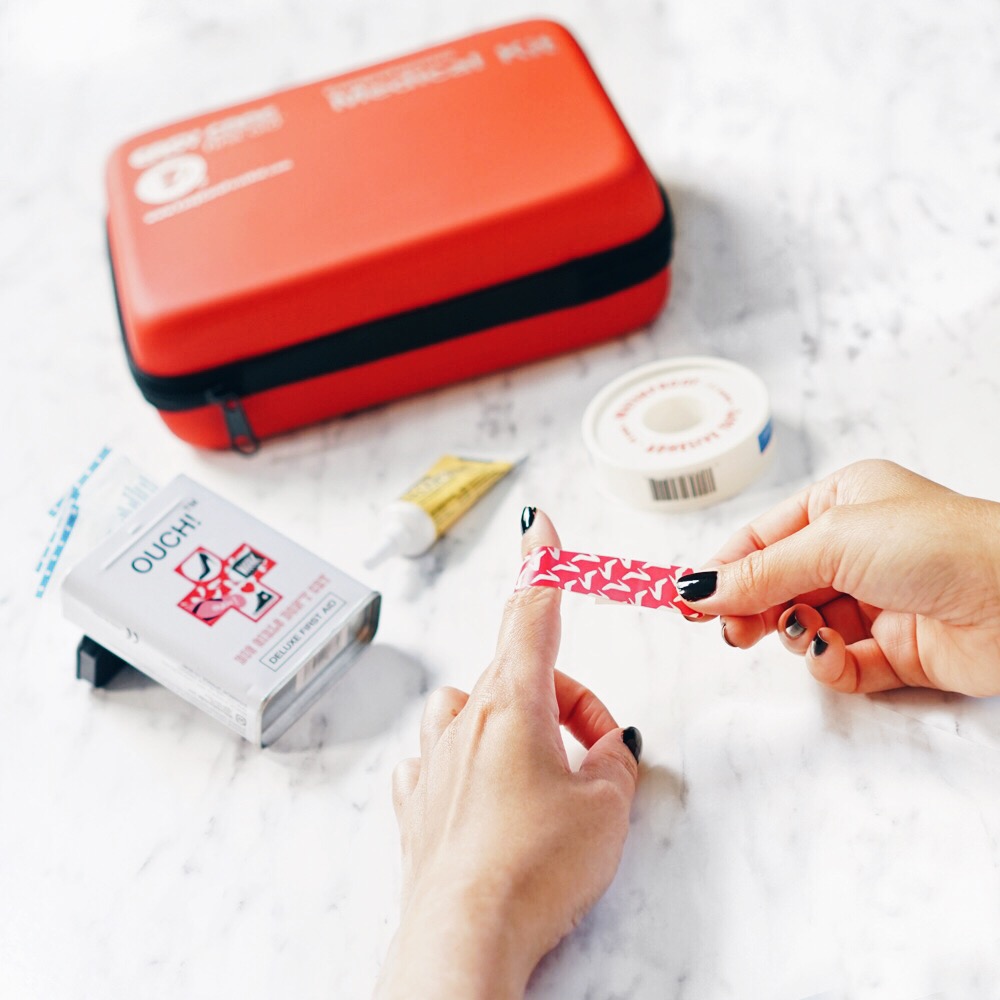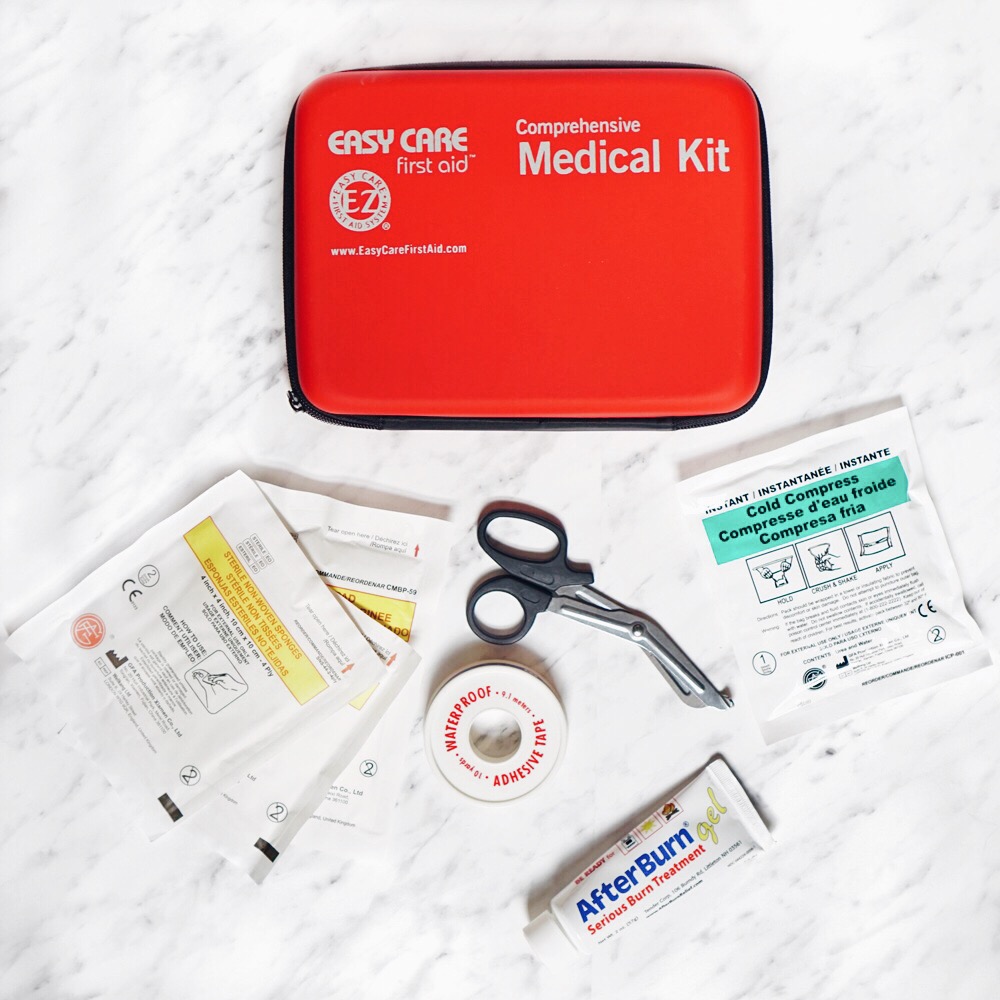Do You Have A First Aid Kit?
Raise your hand if you have a first aid kit at home? I mean a legitimate first aid kit; not some boxes of band-aids, Neosporin, and/or hydrogen peroxide.
My thought is that probably not many of you have one. I was guilty for a long time. All I had was random boxes of band-aids in different closets & drawers and antiseptic somewhere in the house.
Every home should have at least a basic first aid kit. Something stored in a central location that can be used to treat minor injuries. Your basic first aid kit is traditionally intended for minor injuries while more comprehensive first aid kits can be customized for different emergency situations or based on a specific activity/need.
When it comes to a basic first aid kit it you want it to be well-stocked and contain at a minimum some of the following items:
Trauma: Ace bandages, Sterile Gauze Pads (several sizes), Saline, Antiseptic, Adhesive Tape, Adhesive Bandages, Cold Compress
Medication: Aspirin, Ibuprofen, Antihistamine, Antidiarrheal, Acetaminophen, Burn Gel, Antifungal cream, Alcohol pads, Hydrocortizone
Tools & Equipment: Surgical Mask, Gloves, Tweezers, Lighter, Trauma Schears, Scissors, Thermometer, Emergency (foil) blanket, Cotton Pads & Swabs, Flashlight, Safety Pins
Once you have the staples, you can build upon it by considering your family’s medical needs, any potential emergency situations that your hometown might be prone to such as earthquakes, tornadoes, hurricanes, or if you live in a rural area where medical responsiveness is slow.
Nowadays first aid kits come in all different shapes and sizes so opting to buy a ready-made kit might be a good option if putting one together yourself isn't your cup of tea. So let's talk about some of these options:
Basic First Aid Kits: The great thing about basic first aid kits is that you can pick one up almost anywhere. From Target to Walgreens to 7-Eleven, many of these kits on the market offer a great starting point. If choosing store-bought then I would suggest picking one that doesn't come in your typical clear or white containers. You want something in red or in a color that stands out making it easy to find. Think about how much easier a red box is to find if you only have the light of a flashlight or candle. Also basic first kits are relatively compact so having a few of them stashed around your house, in your car, and at work is a great way to be prepared.
Comprehensive First Aid Kits: The comprehensive first aid kit is going to be stocked with more medical supplies used to treat trauma versus basic first aid. While you'll find the components of a basic first aid kit in the comprehensive kits, you'll also find items that are used to treat fractures or dislocations among other, more serious injuries. They are also stocked with larger quantities of the supplies to assist more people. They are ideal for treating injuries when obtaining medical treatment right away may not be an option. These can also be bought in stores and online, and you'll notice that these kits are much larger in size. Some of them coming in the form of a backpack so you can grab it for bugging out, camping, or if you're out on long trips. A lot of these kits come with manuals for how to use all of the items in the bag but also how to treat and assist various injuries, which is super handy, especially if Google is unavailable.
Build Your Own: If you have specific medical needs for you and your family then building your own might be a great option. I know that preppers typically prefer to build their own as they like to ensure they have a stocked kit for various emergency situations that might also include bugging out. If you do opt to build your own, ensure that you have the basic essentials as mentioned above, and the contents are stored in one container (preferably red). You can use anything from makeup bags or nylon bags and you can easily group items with Ziploc bags. If you are interested in building your own first aid kit, this checklist from REI is extremely helpful.
Some things to keep in mind after you've decided the first aid kit route that's best for you and your family's needs:
Perform a contents check at least once a year to make sure that items haven't expired, leaked, or gone bad. If so, replace those items.
For any items that might be running on battery, such as a flashlight or thermometer, check their state and replace batteries if necessary.
Make sure you have a first aid manual that offers instructions on how to use the items along with tips to treat injuries. If your kit didn't come with one, you can always buy your own to include.
If you have health issues, keep a list of medications and/or emergency phone numbers with your kit as well. This is good information in case someone else is coming to your aid.
Ensure your kit is stored in a location that is accessible. Under your bed or in the back of a closet can make these hard to quickly access. I would also suggest not keeping your kit in your bathroom as the humidity from the shower can deteriorate some of the adhesives,
One final note about first aid kits...when you're building your first aid kit and thinking of your family’s needs don't forget about keeping your pet prepared as well. They need their own set of first aid supplies.
Having a first aid kit in the home is important as accidents and injuries can happen at any time. It's better to be prepared with a kit you can find rather than fumbling through a drawer looking for items you thought you had.


